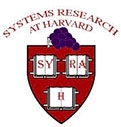There is a great deal of research about improving Web server performance and building better, faster servers, but little research in characterizing servers and the load imposed upon them. While some tremendously popular and busy sites, such as netscape.com, playboy.com, and altavista.com, receive several million hits per day, most servers are never subjected to loads of this magnitude. This paper presents the analysis of internet Web server logs for a variety of different types of sites. We present a taxonomy of the different types of Web sites and characterize their access patterns and, more importantly, their growth. We then use our server logs to address some common perceptions about the Web. We show that, on a variety of sites, contrary to popular belief, the use of CGI does not appear to be increasing and that long latencies are not necessarily due to server loading. We then show that, as expected, persistent connections are generally useful, but that dynamic time-out intervals may be unnecessarily complex and that allowing multiple persistent connections per client may actually hinder resource utilization compared to allowing only a single persistent connection.
Extensible operating systems allow applications to modify kernel behavior by providing mechanisms for application code to run in the kernel address space. Extensibility enables a system to efficiently support a broader class of applications than is currently supported. This paper discusses the key challenge in making extensible systems practical: determining which parts of the system need to be extended and how. The determination of which parts of the system need to be extended requires self-monitoring, capturing a significant quantity of data about the performance of the system. Determing how to extend the system requires self-adaptation. In this paper, we describe how an extensible operating system (VINO) can use in situ simulation to explore the efficacy of policy changes. This automatic exploration is applicable to other extensible operating systems and can make these systems self-adapting to workload demands.
The boundary between application and system is becoming increasingly permeable. Extensible applications, such as web browsers, database systems, and operating systems, demonstrate the value of allowing end-users to extend and modify the behavior of what was formerly considered to be a static, inviolate system. Unfortunately, flexibility often comes with a cost: systems unprotected from misbehaved end-user extensions are fragile and prone to instability.
Object-oriented programming models are a good fit for the development of this kind of system. An extension can be designed as a refinement of an existing class, and loaded into a running system. In our model, when code is downloaded into the system, it is used to replace a virtual function on an existing C++ object. Because our tool is source-language neutral, it can be used to build safe extensible systems written in other languages as well.
There are three methods commonly used to make end-user extensions safe: restict the extension language (e.g., Java), interpret the extension language (e.g., Tcl), or combine run-time checks with a trusted environment. The third technique is the one discussed here; it offers the twin benefits of the flexibility to implement extensions in an unsafe language, such as C++, and the performance of compiled code.
MiSFIT, the Minimal i386 Software Fault Isolation Tool, can be used as the central component of a tool set for building safe extensible systems in C++. MiSFIT transforms C++ code, compiled by g++, into safe binary code. Combined with a runtime support library, the overhead of MiSFIT is an order of magnitude lower than the overhead of interpreted Java, and permits safe extensible systems to be written in C++.
